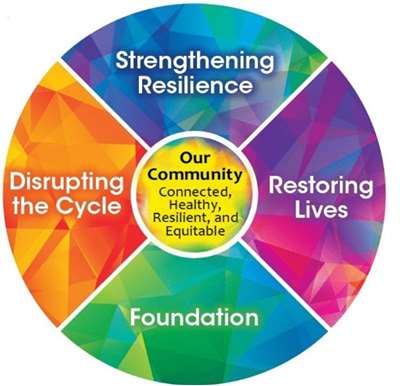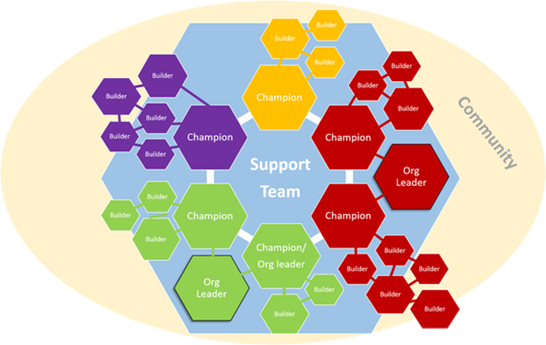Resilient & Trauma-Informed Communities (RTIC)
Coalitions That Adopted
Strategy Type
School-based & Community-based
Strategy Goal
Reduce the number of middle and high school-age youth who are at risk for depression as reported on the Youth Risk Behavior Survey (YRBS).Intended Population
Communities and organizations across La Crosse County.Strategy Background
In La Crosse County, the 2015 Youth Risk Behavior Survey (YRBS) revealed that nearly one-third of county high school students reported feeling so sad and hopeless that it was impacting their daily lives. In addition, data showed students were feeling less connected to their school environments than previous years. The insights contained in the YRBS report reflected the need to increase youth protective factors to help them face their life stresses, overcome adversity, and ultimately to improve their mental health. Understanding that adverse childhood experiences (ACEs) and toxic stress are the greatest risk factors for youth mental health challenges, the La Crosse County coalition, Better Together, aimed to raise awareness of the impact they have on mental wellness. With the knowledge that their work could have a greater impact, the coalition adopted a multi-sector collective impact approach – meaning they brought multiple organizations together under a common goal – to expand their focus from youth to the community at large. By building resilience and being more trauma-informed as a community, Better Together worked to address the negative effects of trauma, stress, and ACEs altogether.
Building a Resilient and Trauma-Informed Community (RTIC) means educating the community on ACEs and growing the general awareness around the role trauma plays in personal development. Resilience is defined as the ability to adapt, bounce back, and cope with adversity, trauma, and stress. According to the Center for Disease Control and Prevention (CDC), 61% of adults in the U.S. have experienced at least one ACE and 16% have experienced 4 or more types of ACEs in their lives. What many people do not realize is that exposure to ACEs is associated with increased risk for health problems across one’s lifespan. Recognizing the impact of ACEs and toxic stress is the first step to building resilience.
Resilience can be further developed through healthy and supportive relationships, as well as by recognizing personal needs and taking the appropriate steps to get help. The RTIC framework developed by Better Together and its network of partners is meant to build a community that is connected, healthy, equitable, and resilient.
 Through the use of a volunteer support team that plans trainings, hosts educational sessions and meetings, RTIC participants were able to stay connected and learn from each other as they learned new practices and implemented them within their organizations. The diverse makeup of RTIC allowed the group to keep an ear to the public’s needs, enabling its collective work to change and grow over time in response to those needs.
Through the use of a volunteer support team that plans trainings, hosts educational sessions and meetings, RTIC participants were able to stay connected and learn from each other as they learned new practices and implemented them within their organizations. The diverse makeup of RTIC allowed the group to keep an ear to the public’s needs, enabling its collective work to change and grow over time in response to those needs.
The “Kaleidoscope of Change” RTIC Framework consists of four commitments made to the community:
- Building a Foundation: Establish common language and understanding to support trauma-informed values, actions, and systems.
- Disrupting the Cycle: Reduce childhood exposure to trauma through prevention and early intervention.
- Strengthening Resilience: Enhance protective factors to help people bounce back and reduce the risk of poor health outcomes resulting from trauma and ACE exposure.
- Restoring Lives: Integrate accessible and effective supports that foster healing and recovery.
Did you know: Schools and youth serving agencies have used RTIC to train staff and engage parents.
Strategy
Challenges and Tactics to Address Them
List of Challenges and Tactics
RTIC Statistics
Best Practices
Highlights/Select Work Product
- To Improve Youth Mental Health, La Crosse Project Teaches Community About The Impact Of Trauma | Wisconsin Public Radio (wpr.org)
- Handle With Care Aims To Help Students Exposed To Trauma | Wisconsin Public Radio (wpr.org)
- Better Together hopes to teach trauma-related care method to public | Health | news8000.com




